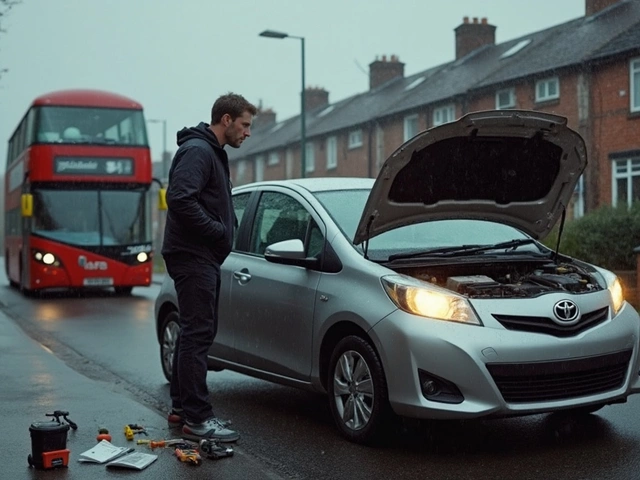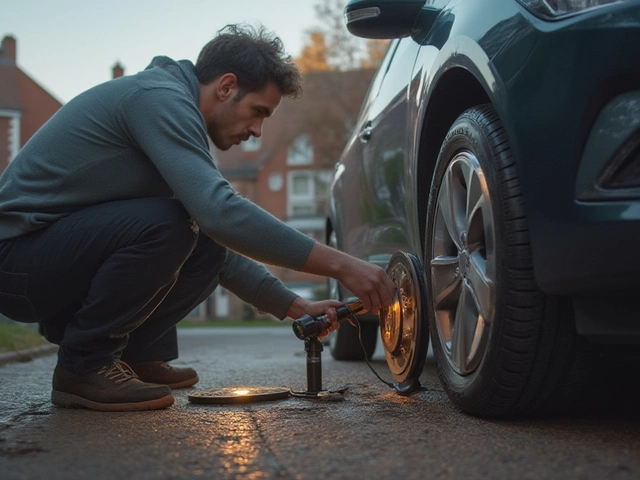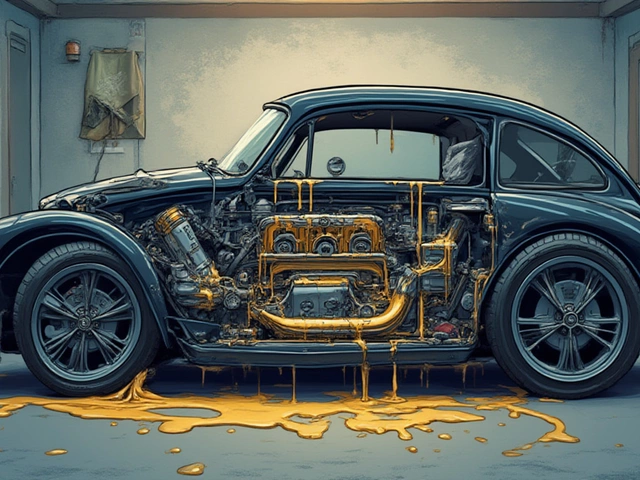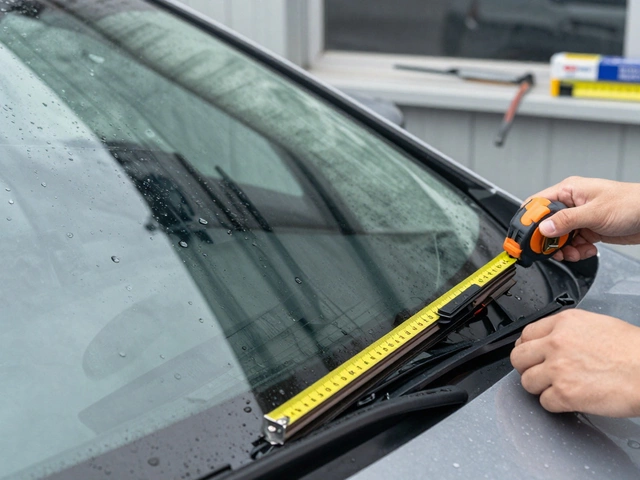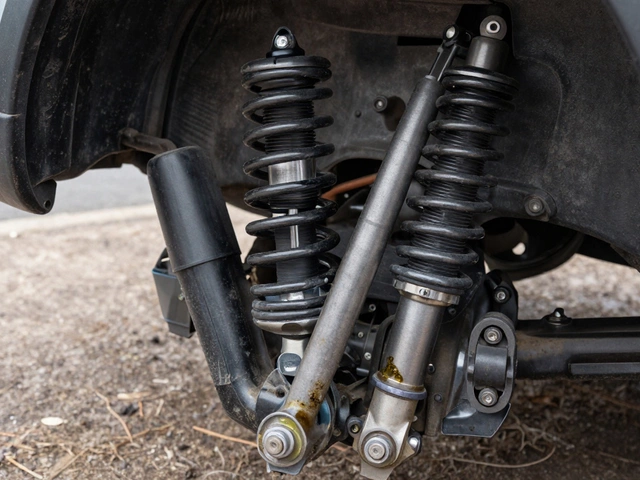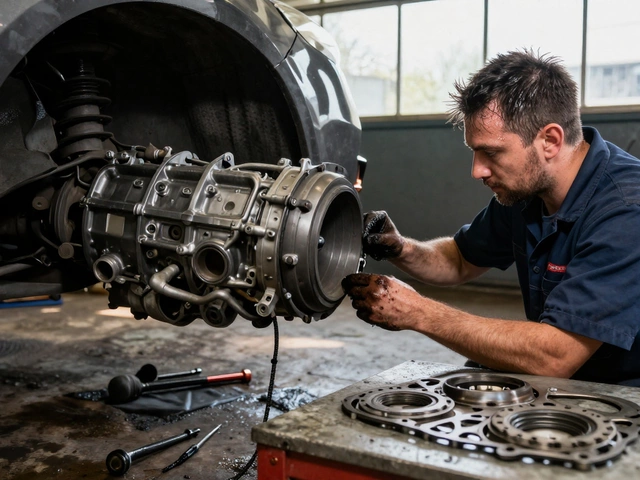Fuel Pump Diagnostic Tool
Check Your Symptoms
This tool helps determine if your vehicle symptoms indicate a failing fuel pump. Based on the symptoms you select, we'll provide an assessment of whether you likely need to check or replace your fuel pump.
Select your symptoms and click "Check My Symptoms" to get your assessment.
Did you know a failing Fuel Pump is the most common reason a modern car suddenly loses power while driving? Most drivers notice a drop in performance before the engine quits altogether, but the warning signs can be easy to miss. This guide walks you through every symptom, how to tell a pump problem apart from a clogged filter or a bad injector, and what to do when the pump finally gives up.
What a Fuel Pump Does for Your Car
The Fuel Pump draws gasoline from the tank and pushes it through the fuel line at the precise pressure the engine needs. Most newer vehicles use an electric pump located inside the fuel tank, while older models may have a mechanical pump driven by the camshaft. The pump’s job is continuous: keep the fuel rail at a steady 30‑55psi (depending on engine design) so that each cylinder gets the right amount of fuel at the right time.
Top fuel pump signs Your Car Gives You
- Engine sputters or stalls at low RPM - When you’re idling or crawling through traffic, the engine may stumble because the pump can’t maintain enough pressure.
- Difficulty starting the vehicle - A weak pump doesn’t deliver fuel fast enough for the spark to ignite, leading to a slow‑crank or multiple tries.
- Loss of power under acceleration - You’ll feel a noticeable dip in horsepower as soon as you press the gas pedal.
- Whining noise from the fuel tank - A high‑pitched whine that changes with engine speed often indicates a worn pump motor.
- Fuel smell inside the cabin - Leaking seals or a cracked pump housing can let gasoline seep into the ventilation system.
- Check Engine Light (CEL) with specific codes - Codes P0087 (fuel pressure too low) or P0230 (fuel pump primary circuit) point straight to pump issues.
- Fuel gauge reading erratically - A failing pump may cause the gauge to jump or stay stuck, as the tank sensor receives inconsistent feedback.
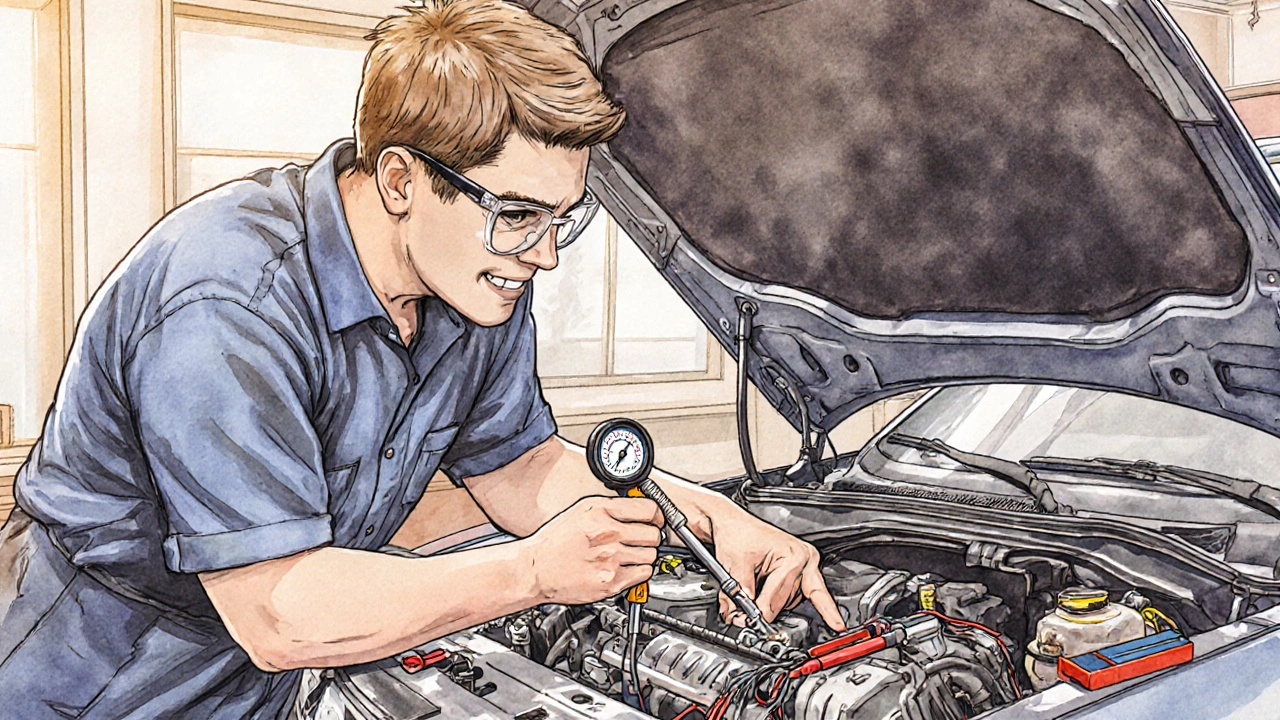
How to Distinguish Pump Problems from Other Fuel‑System Issues
| Symptom | Likely Cause | Key Diagnostic Check |
|---|---|---|
| Engine stalls at idle | Fuel Pump weakness | Measure fuel pressure with a gauge - should be within spec |
| Hard start, especially when hot | Fuel Filter clogged | Inspect filter element; replace if flow is restricted |
| Rough running after startup | Fuel Injector malfunction | Run injector cleaning cycle or perform spray pattern test |
| Whining from tank area | Worn Fuel Pump motor | Listen with a mechanic’s stethoscope - pitch varies with RPM |
| Check Engine Light with P0087 | Low fuel pressure - could be pump or Fuel Pressure Regulator | Test regulator’s vacuum reference; compare pressure against specs |
Step‑by‑Step DIY Diagnosis
- Gather tools: fuel pressure gauge, basic hand tools, safety goggles, and a multimeter.
- Relieve fuel system pressure: remove the fuel pump relay, start the engine, then turn it off. This prevents gasoline spray.
- Connect the pressure gauge to the test port on the fuel rail (usually a Schrader valve). Crank the engine for a few seconds.
- Read the pressure:
- If it’s below the manufacturer’s spec (e.g., 40psi for many gasoline engines), the pump is suspect.
- If pressure is normal but the engine still misbehaves, move on to filter and injector checks.
- Inspect the Fuel Filter. A blackened or clogged element points to a filtration issue rather than a pump.
- Check electrical supply: locate the pump’s power connector, measure voltage while the key is in the “ON” position. You should see battery voltage (≈12.6V). No voltage means a wiring or relay problem.
- Listen for the pump’s whine: with the engine running, place a mechanic’s stethoscope (or a long screwdriver) on the tank. A faint, steady whine is normal; a high‑pitched squeal signals wear.
- Review any trouble codes using an OBD‑II scanner. Note codes P0087, P0230, or P0455 (evap leak) as they guide the next steps.
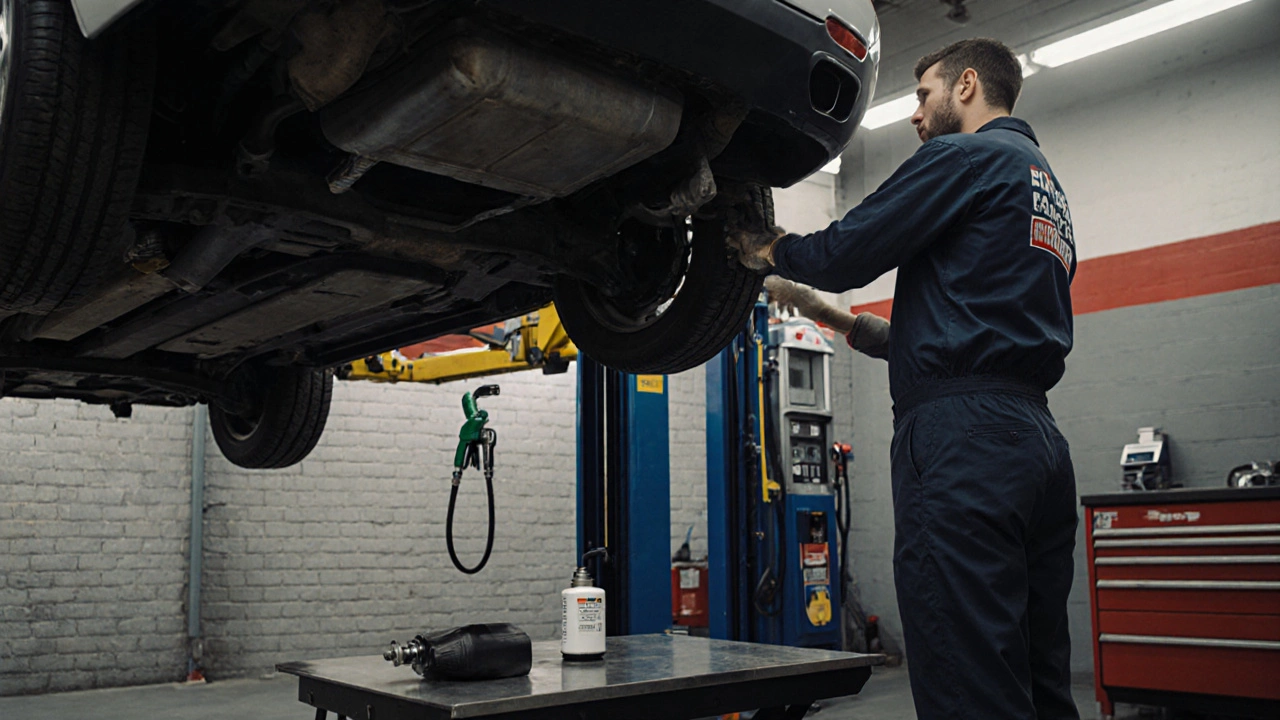
When to Call a Professional and What It Costs
If your pressure test shows a consistent deficit, the pump likely needs replacement. While swapping a pump in a Car with an in‑tank electric unit is doable for seasoned DIYers, it involves dropping the fuel tank, disconnecting fuel lines, and re‑pressurizing the system - a job that’s messy and safety‑critical.
Typical labor rates in the UK range from £70‑£100 per hour. Most garages quote 2‑3hours for a full pump replacement, plus the part price (£120‑£350 for a standard OEM pump). Some independent shops may offer a “pump & tank lift” package for around £350‑£450 total. Always ask for a breakdown so you can compare quotes.
Preventive Care - Keep Your Pump Running Longer
- Use high‑quality gasoline with the correct octane. Low‑quality fuel contains more contaminants that can wear pump seals.
- Replace the Fuel Filter every 30,000‑40,000km as per manufacturer recommendations.
- Avoid running the tank below a quarter full. A near‑empty tank lets the pump draw in sediment that settles at the bottom.
- Periodically clean the fuel system with a reputable fuel‑system cleaner. This helps remove varnish that can affect pump performance.
- Keep an eye on the Check Engine Light. Modern ECUs flag low‑pressure conditions long before you feel a power loss.
Frequently Asked Questions
How long does a fuel pump typically last?
Most OEM electric pumps last between 100,000 and 150,000miles (160,000‑240,000km). Driving conditions, fuel quality, and how often you run the tank low can push the lifespan shorter or longer.
Can I replace the fuel pump myself?
If you have experience with lifting a fuel tank, disconnecting fuel lines, and working safely around gasoline, it’s doable. However, many UK garages consider it a “minor to moderate” repair because of the safety risks. First‑time DIYers are usually better off letting a professional handle it.
What’s the difference between a fuel pump and a fuel pressure regulator?
The pump creates the pressure needed to move fuel from the tank to the injectors. The regulator fine‑tunes that pressure, ensuring it stays within a narrow band even as engine load changes. A failing regulator can mimic low‑pressure pump symptoms but usually won’t make the pump whine.
Why does my car sputter only when I’m in neutral?
When you’re in neutral the engine runs at a lower RPM, so the pump has to maintain pressure with less flow. A marginal pump can’t keep up, causing a brief sputter. Move the car into gear and the RPM rise often masks the problem temporarily.
Is a whining sound always a bad sign?
A low, steady whine is normal - it’s the pump motor running. A high‑pitched, squealing tone that changes pitch with engine speed usually means internal bearings are wearing out and the pump will fail soon.

